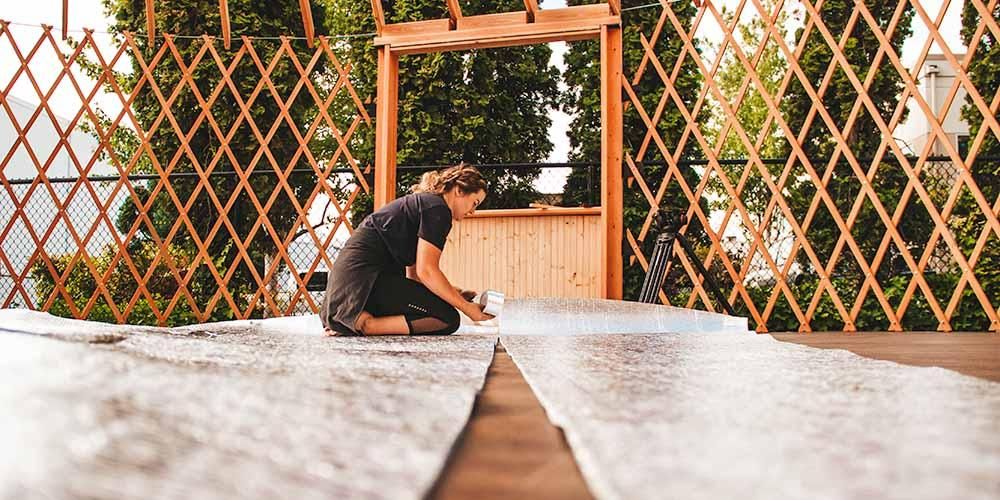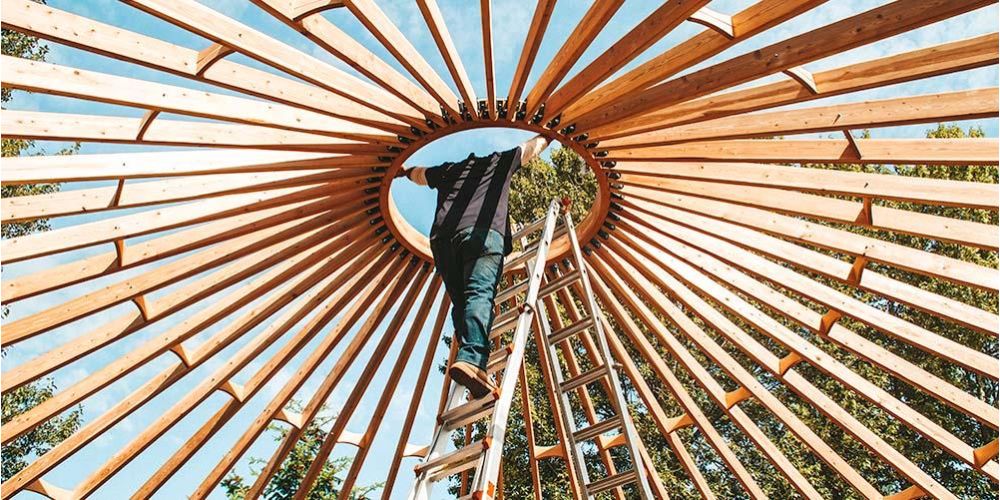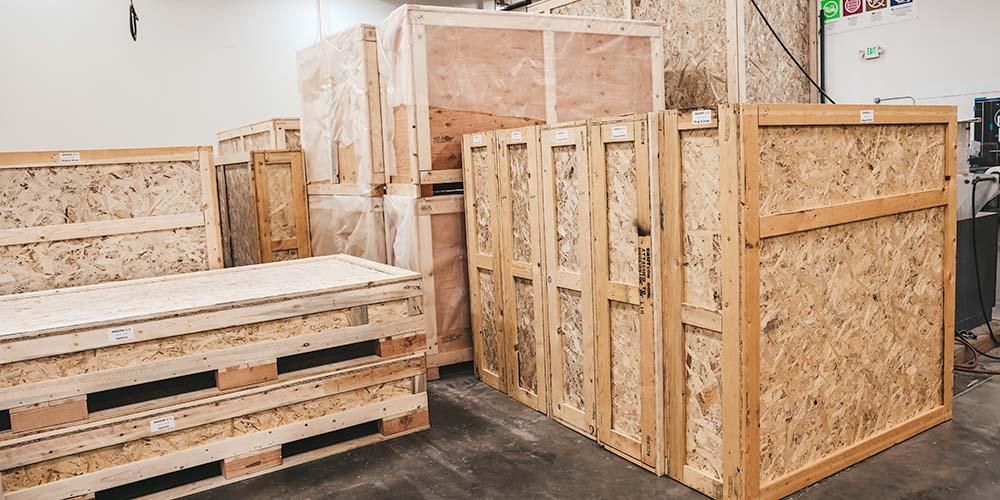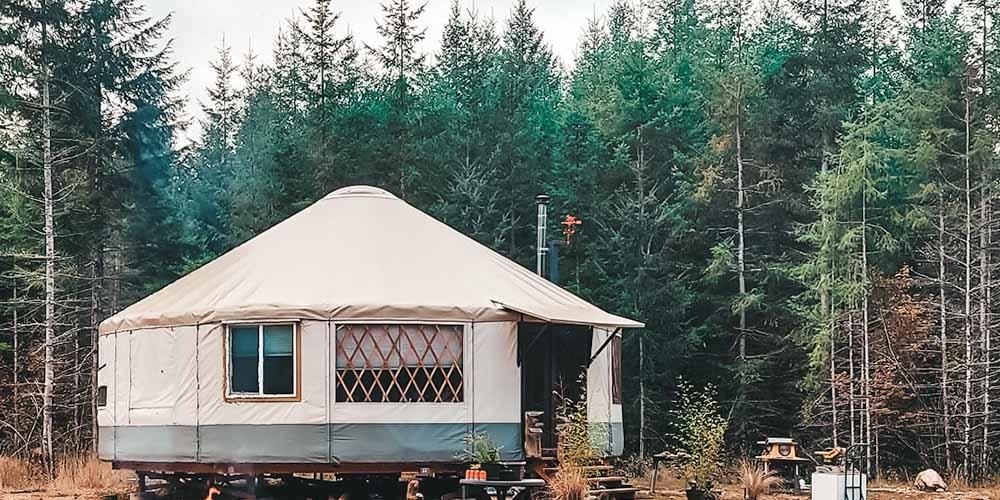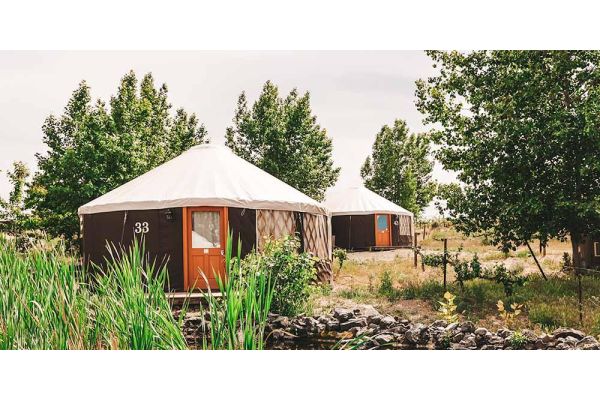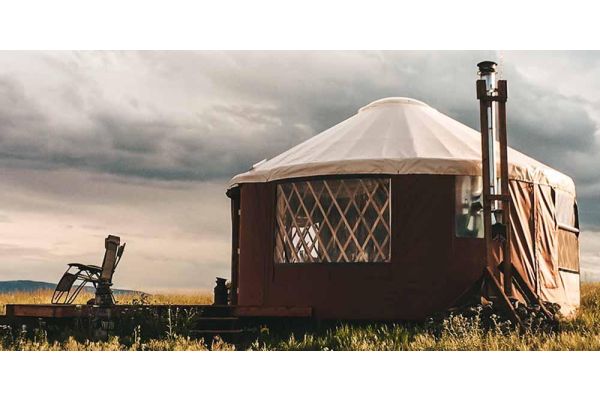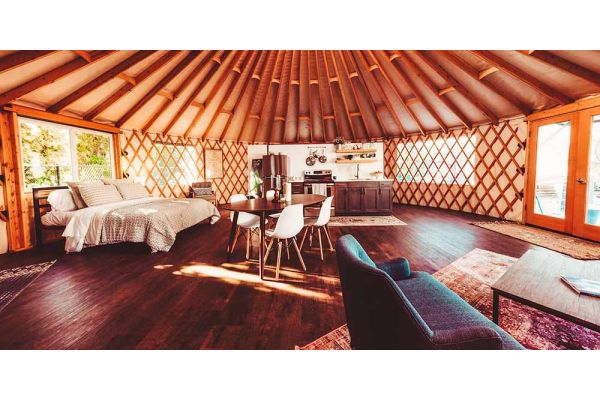We are so excited to give you the facts on R-value and E-value yurt insulation made from reflective bubble wrap that we called on NASA's history to help explain it.


NASA And Yurt Insulation
Temperatures in space are a lot more extreme than they are here on Earth and insulation in space is a fact of survival.
A popular form of yurt insulation is a LOW-E Radiant Heat Barrier type insulation that NASA researched in-depth for astronauts and spacewalks. Rainier Yurts offer a single layer and a double layer of this NASA-developed material. This form of double-sided insulation bubble wrap is new to most people, including the building industry. This blog page is designed to educate you on Radiant Heat Barrier Insulation and give you informative tips when conversing with your local building department and yurt installers.
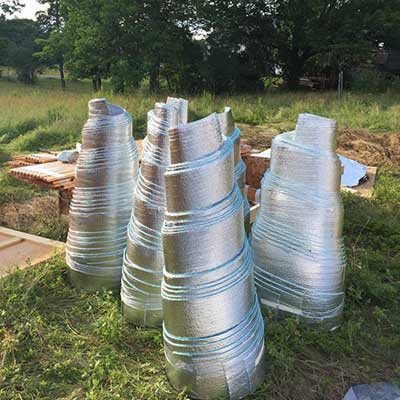

Reflective Moment
Thank you, NASA for trying to find a way to protect astronauts during space walks and from the extreme temperature shifts that can range from -273 degrees Celsius to +238 degrees Celsius. NASA scientists discovered that if a space suit was to be made of conventional glass spun insulation that they would have to add a seven-foot thick layer of protective shielding on the space suit. Obviously, fiberglass insulation was not going to work, so they decided to research and find the facts on a more protective, less bulky insulate.
Enter used aluminum foil and reflective technology as a radiant heat barrier to solve the problem. NASA's research revealed that reflected body heat could keep their astronauts warm and at the same time, the crinkled texture of used aluminum foil reflects deadly direct radiation from the sun, thus keeping space walkers protected, cool, and warm at same time.
Facts on Barriers
Most people are familiar with traditional insulating barriers like fiberglass, cellulose, Styrofoam, and rock wool. These products insulate by absorbing or resisting Conductive and Convective Heat Transfer.
Radiant Heat Transfer is another more dominant way used to insulate. This type of barrier reflects heat energy instead of absorbing it. And voila! We have found the NASA / Yurt insulation connection!
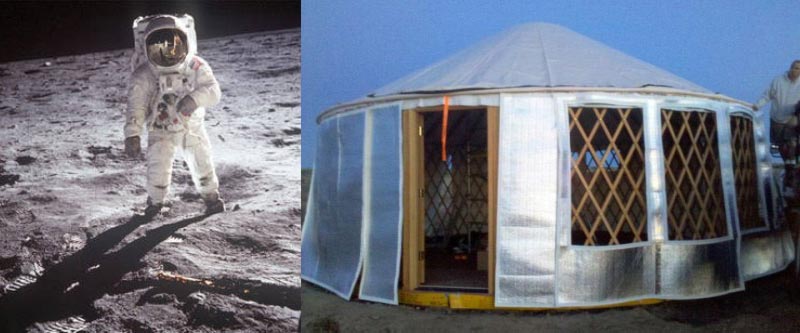

The Importance
Only a few decades ago power was extremely inexpensive. It was much easier to simply crank the heat than insulate your house properly. However, such is not the case as homeowners today can attest to. As power costs increase, new facts on E-Value and R-value efficiency have paved the way for environmentally aware homes and Yurts. Codes and Regulations have replaced the "Crank up the heat " mentality.
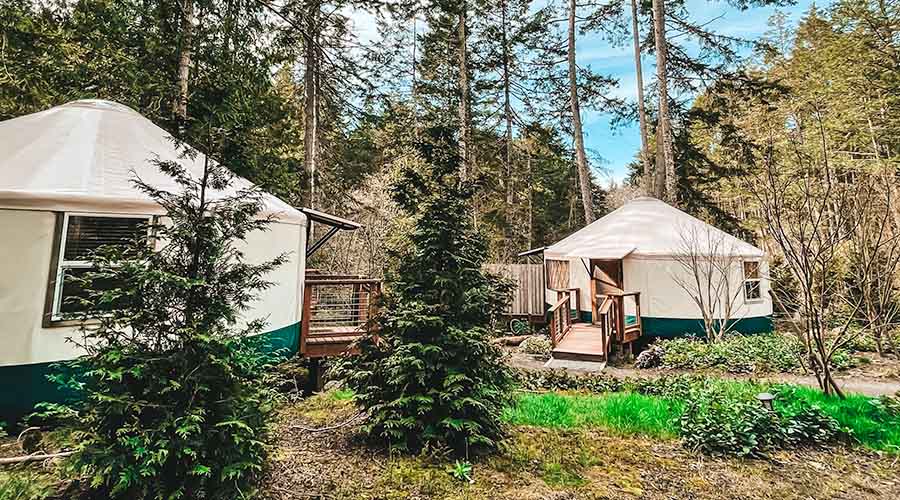

Foil Facts On Yurt Insulation
Double-sided reflective foil insulation is considered "Green" insulation. It is highly effective when used with a consistent internal heat source. It reduces the amount of heat leaving or entering any structure due to the double-sided foil surface. From an interior point of view, it is possible for Reflective Insulation to reflect 95% to 97% of the radiant heat back to the center of a rounded structure when your yurt insulation is installed properly. Now that fact is definitely worth doing a little homework on R-Value and E-value.
Facts On R-Value, Conduction and Convention
The R-value of insulation is a measure of how effective it is at resisting two forms of heat transfer: conduction and convection. Conduction is when heat is transferred between solid objects. Convection is when heat is passed from one object to another through air circulation.
While insulating with a high R-value product is extremely important, most people don’t realize that standard insulation loses R-value over time due to environmental moister and the condensing of the fiberglass material. Foil wrap is far more resilient to the environment and snaps to install or replace, should you find the need to.
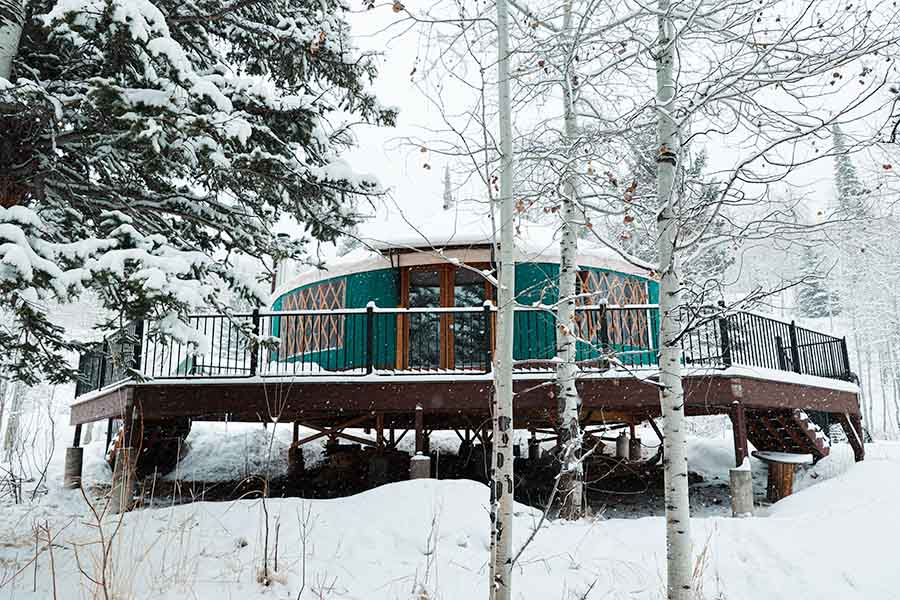

Facts On Heat Emission And E-Value
E-Value is measured by a material's ability to prevent Radiant heat from transferring. E-Value is also far more important than R_value because most of the heat a dwelling looses is through emission or Radiant Heat Transfer. Emission is the direct transfer of heat from a radiant source, like a pellet stove or an element heater. Because typical standard insulation is not highly reflective, it tends to have a low E-Value which makes it a poor insulator when compared to double-sided foil.
Facts On Yurt Insulation And Building Codes
So what are the true facts on R-Value and E-Values for Reflective yurt insulation when comparing them to "equivalent" alternative type of insulation?
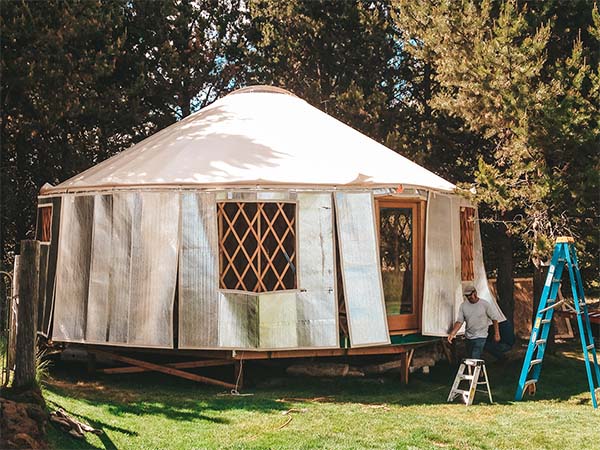

According to current standards, R-values have been the most researched for the bulk of insulation materials.
Calculating the performance of the E-Value for Radiant barriers is more complex. With a good Radiant barrier in place, most heat flow is by convection. Since Radiant barriers have high reflectivity, their thermal advantages are mainly related to the heat they emit. Emissivity is the measure of the efficiency with which a surface emits thermal energy. Okay, let me get a little technical with you. The R-value for Rainier Outdoor single-layer Reflective insulation is R9 and our double layer is R10. When used in combination with a decent heat source and a circular interior these values become extremely efficient. Basically, the heat radiating from your pellet stove reflects onto your yurt walls and then bounces back to the center of your cozy little Yurt, bring on the popcorn!!
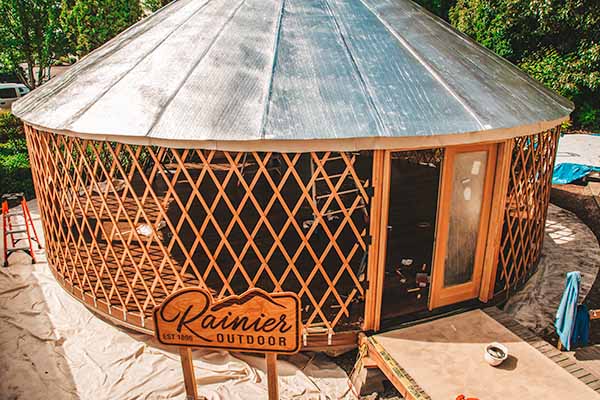

Reflective Insulation, R and E-Values, the Benefits
- Class A, Class 1 Fire Rating (passed the ASTM 286 Fire Test)
- Non-Toxic
- Sound Deadening Properties
- Insect Resistant
- Excellent Vapor Barrier
- Reduces Condensation
- A Permeability Rating of 13 – so no mildew or other moisture damage will occur
- Contains No Allergens
- Requires no Gloves, Masks, or Wire to hold in place
- No stapling
Yurt Insulation FAQ
Will reflective foil barrier insulation trap mildew-causing moisture in my yurt walls and ceiling?
Low-E reflective barrier is designed to allow vapor to escape the yurt envelope with a Perm Rating of 13 – it will not contribute to mildew growth in your home.
Will reflective barrier insulation create a fire hazard in my yurt?
Reflective barrier insulation is fire-resistant with a Class A fire rating – Of course, like almost any material, it will melt and eventually burn if exposed to an open flame for prolonged periods of time.
What type of insulation is used in yurts?
Rainier Outdoor uses reflective foil insulation, providing R-9 or R-10 efficiency depending on single or double layers.
What is R-value in yurt insulation?
R-value measures how well the insulation resists heat transfer, with higher values offering better thermal performance.
What is E-value, and why is it important?
E-value measures radiant heat reflection, crucial for preventing heat loss and improving energy efficiency in yurts.
Is reflective insulation eco-friendly?
Yes, reflective insulation is considered "green" due to its ability to reduce energy consumption and maintain indoor temperatures efficiently.
How does yurt insulation prevent condensation?
Reflective insulation acts as a vapor barrier, reducing moisture buildup and condensation inside the yurt.
Enjoy the journey!

